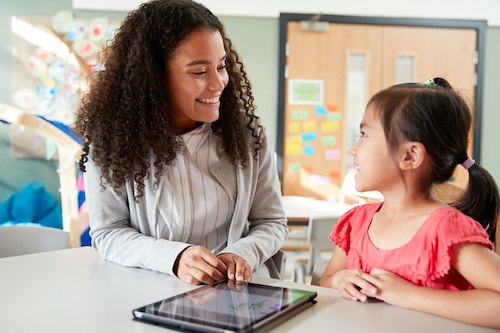Key points:
- Tools and techniques in education foster effective teaching and learning experiences
- Learn about new strategies for teaching tools and techniques
- Stay up to date on the latest in classroom learning trends
Teaching techniques refer to the diverse array of strategies and methodologies employed by educators to engage students and facilitate effective learning experiences. What are some examples of teaching techniques? From traditional methods like lectures to innovative approaches such as active classroom learning and technology integration, these techniques play a vital role in shaping educational outcomes.
What are some examples of teaching techniques?
Effective teaching strategies encompass a variety of approaches tailored to engage students and promote meaningful learning experiences. One such technique is active learning, where students participate actively in the learning process through discussions, problem-solving tasks, and hands-on activities. This approach fosters critical thinking, collaboration, and retention of information by involving students in the exploration and application of concepts.
Another effective teaching strategy is differentiated instruction, which involves adapting teaching methods and materials to meet the diverse learning needs of students. By offering multiple pathways for learning, educators accommodate various learning styles, abilities, and interests within the classroom, promoting equity and inclusivity.
Furthermore, inquiry-based learning encourages students to ask questions, explore topics independently, and seek answers through investigation and discovery. This student-centered approach fosters curiosity, creativity, and deeper understanding of concepts as students take ownership of their learning journey.
Additionally, collaborative learning promotes teamwork and peer interaction through group activities and discussions. By working together to achieve common goals, students develop communication skills, empathy, and teamwork abilities essential for success in the classroom and beyond.
Moreover, incorporating technology as a teaching strategy enhances engagement and facilitates interactive learning experiences. Educational software, multimedia presentations, and online resources provide opportunities for personalized learning, skill development, and access to a wealth of information in today’s digital age. Through these effective teaching strategies, educators can create dynamic and inclusive learning environments that empower students to succeed academically and thrive as lifelong learners.
What are the techniques of a good teacher?
Effective teaching techniques encompass a blend of pedagogical strategies and interpersonal skills that engage students and promote meaningful learning experiences. These may include clear communication, active listening, and the ability to create a supportive and inclusive classroom environment.
Moreover, good teachers employ differentiated instruction to accommodate diverse learning styles and abilities, adapting their approach to meet individual student needs. They utilize interactive teaching methods such as hands-on activities, group discussions, and technology integration to foster engagement and critical thinking.
Additionally, effective teachers provide timely feedback, encourage student participation, and establish clear learning objectives to guide instruction. By employing a variety of effective teaching techniques, educators can create dynamic and enriching learning environments that inspire student curiosity, promote academic growth, and cultivate lifelong learning skills.
What are the 4 instructional methods?
In K-12 teaching, four key instructional methods shape classroom learning experiences and underscore the importance of teaching methods. First, direct instruction involves explicit teaching of concepts through lectures, demonstrations, and guided practice. This method provides structured learning experiences and ensures students receive foundational knowledge essential for understanding complex topics.
Secondly, inquiry-based learning encourages students to explore topics independently, ask questions, and seek answers through investigation and discovery. By fostering curiosity and critical thinking skills, this student-centered approach promotes deeper understanding and long-term retention of knowledge.
Furthermore, collaborative learning emphasizes teamwork and peer interaction through group activities, discussions, and projects. This method encourages communication skills, cooperation, and collective problem-solving, preparing students for collaborative work environments and real-world challenges.
Lastly, experiential learning provides hands-on experiences and real-world applications of knowledge. Through experiments, field trips, and simulations, students engage with concepts in authentic contexts, reinforcing understanding and fostering practical skills.
By incorporating these instructional methods into K-12 teaching practices, educators can create dynamic and inclusive learning environments that cater to diverse student needs, promote active engagement, and cultivate essential skills for success in academics and beyond.
What is the most effective method of teaching?
Determining the best method of teaching is complex, as it depends on various factors such as subject matter, student demographics, and learning objectives. However, one approach consistently hailed as effective is differentiated instruction. This method tailors teaching strategies and materials to accommodate diverse learning styles, abilities, and interests within the classroom, promoting equity and inclusivity. By offering multiple pathways for learning, educators can engage students effectively, foster deeper understanding of concepts, and support academic success for all learners.
Conclusion
Examples of teaching techniques encompass a diverse array of strategies tailored to engage students and promote effective learning experiences. From active learning and differentiated instruction to collaborative learning and technology integration, these techniques play a vital role in shaping educational outcomes, fostering critical thinking, and preparing students for success in today’s dynamic world. By incorporating a variety of teaching approaches, educators can create dynamic and inclusive learning environments that cater to the individual needs of students, promote academic achievement, and cultivate lifelong learning skills.
- Classroom Learning - April 5, 2024
- Advantages and Disadvantages of Classroom Management - April 5, 2024
- What are Disadvantages of Classroom Management? - April 5, 2024

